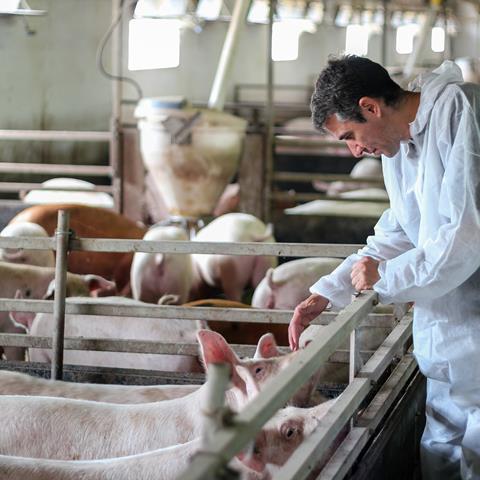In many developing countries, the use of antibiotics in both humans and animals is often indiscriminate and poorly regulated. In livestock production systems, antibiotics are administered not only for therapeutic purposes but also prophylactically, metaphylactically, and even as growth promoters. Such weak regulation has accelerated the emergence and spread of antibiotic resistance.
Globally, animals contribute 15–60% of the dietary protein requirements of humans, depending on the economic status of a country. However, animal-derived foods come with the risk of antibiotic residues and the transmission of resistant bacteria or resistance genes from animals to humans. The flow of resistance is not unidirectional. In reverse, animals are also exposed to resistant bacteria when they are fed food waste, particularly plate leftovers from hotels, restaurants, and household kitchens – a common practice in many developing or underdeveloped regions.
The well-documented antimicrobial, antioxidant, anti-inflammatory, and immunomodulatory properties of probiotics position them as viable alternatives to prophylactic, metaphylactic, and growth-promoting antibiotics in animals. However, most probiotics currently used in commercial animal diets are isolates from fermented foods intended for human consumption, raising doubts about their survivability and efficacy in the gastrointestinal tracts of non-human hosts. Expecting consistent host benefits under these conditions is unrealistic.
For probiotics to function effectively, the host of origin and the specific strain are crucial for successful colonization and activity. Therefore, species-specific solutions are strongly recommended. Probiotics isolated from the feces of a particular animal species and reintroduced into the same species, in pure culture form, represent a practical strategy to replace antibiotics. Many researchers across the globe are now working toward this goal, isolating and characterizing such targeted probiotic solutions for different animal species. With further refinements, these could even be customized at the breed and location level, ensuring optimal performance.
Adding to this perspective, Soledad Gurovic (The Microbiologist, September 15, 2025) highlighted that dietary patterns significantly influence the fecal microbiome, which differs from the biofilm-forming gut microbiome that is directly attached to the gut mucosa. This insight suggests that even more effective probiotic strategies could be developed by specifically targeting the gut mucosa-associated microbiome rather than relying solely on fecal isolates. Together, these evolving approaches open a new frontier in addressing the global challenge of antibiotic resistance in animal agriculture, while safeguarding both animal and human health.








No comments yet